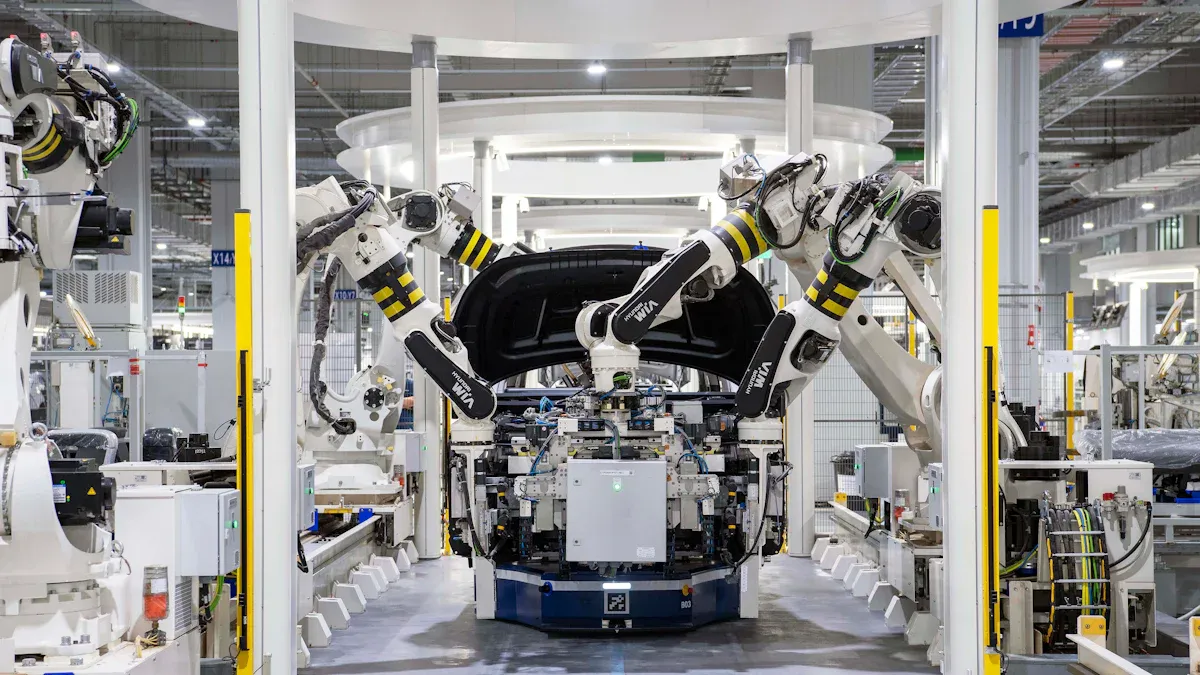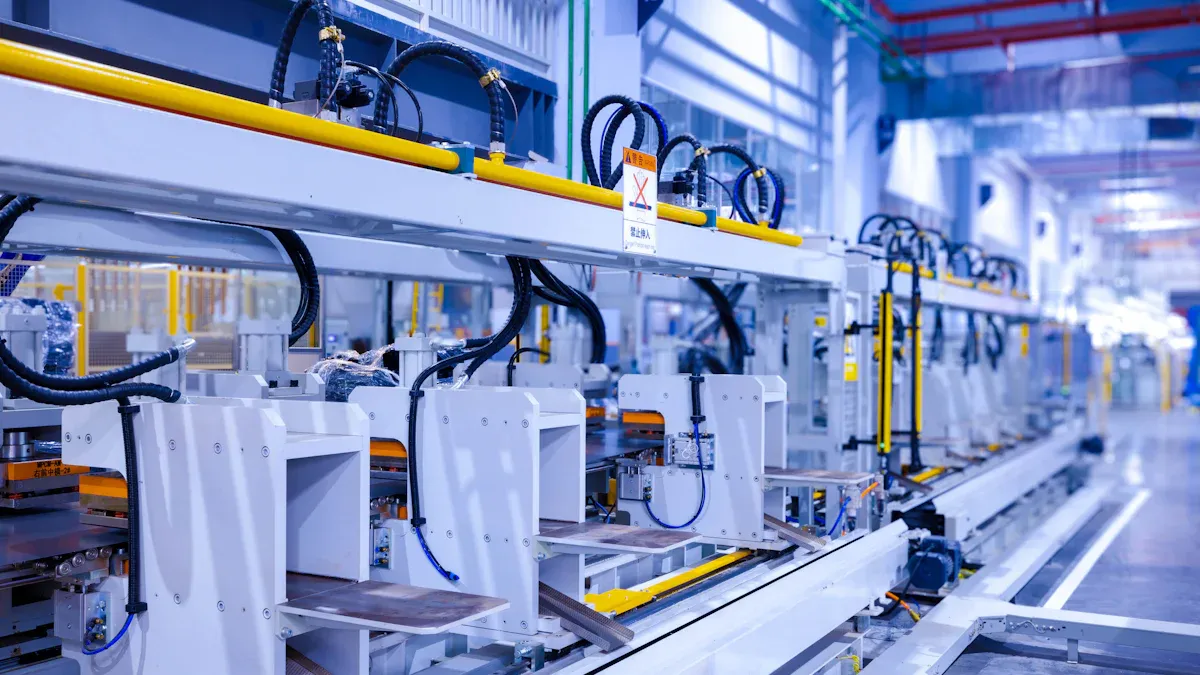
A dependable PCBA supplier is crucial to the success of your project. The right PCBA supplier ensures high-quality standards, keeps costs manageable, and guarantees timely deliveries. Choosing the ideal PCBA supplier minimizes challenges and promotes seamless operations. Whether you’re working on prototypes or large-scale production, a trusted PCBA supplier helps you achieve your objectives efficiently.
Key Takeaways
Pick a PCBA supplier with experience and proper certifications. This shows they can solve problems and make good products.
Look at the supplier’s past work and reviews. Check if they deliver on time and have happy customers to trust them.
Make sure they have good quality checks. A supplier with good testing finds mistakes early and keeps your project on track.
Expertise and Experience in PCBA
Why Industry Knowledge Matters
Picking a PCBA supplier with industry knowledge is very important. A skilled supplier knows how to handle PCBA challenges. They can spot problems early and offer helpful solutions. This ensures your project runs smoothly and meets its goals.
Having industry certifications shows a supplier’s skill and quality. Certified suppliers follow strict standards and have trained workers. These suppliers often make fewer mistakes and work more efficiently. Their good reputation helps them gain more business and makes them a trustworthy partner for your project.
Checking History and References
Looking at a supplier’s history helps you see if they are reliable. You can check their certifications, years of experience, and delivery records. Reliable suppliers deliver on time and communicate well, which helps you meet deadlines.
References and reviews also show how they treat customers. The table below lists key things to check:
Evaluation Criteria | What to Look For | Red Flags |
|---|---|---|
Track Record | Certifications, years in business | No credentials or bad reviews |
Delivery Performance | On-time delivery stats | Many delays |
Engagement | Quick communication | Slow replies or no response |
Customer Support | Helpful support teams | Poor service |
By focusing on these points, you can find trusted suppliers. A good PCBA supplier with strong skills and experience ensures smooth work and great results.
Quality Assurance in PCBA

Certifications and Standards
Certifications show that a PCBA supplier makes reliable products. They prove the supplier follows rules to create high-quality assemblies. For example, IPC-A-610 checks soldering and part placement quality. ISO 9001:2017 ensures good management systems for all industries. ISO 13485:2016 is important for making medical devices. The table below lists key certifications:
Certification/Standard | What It Covers |
|---|---|
IPC-A-610 | Checks soldering and part placement quality. |
ISO 9001:2017 | Ensures strong management systems for many industries. |
ISO 13485:2016 | Focuses on quality for medical device production. |
When picking a PCBA supplier, check their certifications. This step ensures they follow strict rules and meet your project needs.
Quality Control Processes
Good quality control catches mistakes early and saves money. Suppliers use tests like heat testing and thermal cycling to find problems. Tools like regression analysis help keep production consistent and reliable.
Quality control also includes checking materials and testing finished products. This reduces defects and ensures the PCBs work well. Choosing a supplier with strong quality checks lowers risks and helps your project succeed.
Tip: Ask your supplier about their quality checks. A good supplier will explain their testing methods clearly.
Technological Capabilities of a PCBA Supplier

Advanced Manufacturing Equipment
A good PCBA supplier uses modern tools for better results. Machines like automated optical inspection (AOI) systems and laser drills improve accuracy. These tools find mistakes early and ensure parts are assembled correctly. For example, AOI systems use cameras to check solder joints and placements, reducing errors.
Many industries, like electronics and cars, need advanced tools. The global PCB market may grow from $70 billion in 2022 to $86 billion by 2026. This shows how important new technology is for meeting industry demands. Suppliers with advanced tools can handle tricky designs and keep quality high. This is key to your project’s success.
Compatibility with Project Requirements
Every project is different, so suppliers must meet your needs. Whether it’s a prototype or large production, they should match your specifications. For example, if your project uses high-density boards, they need the right tools and skills.
Ask about their experience with similar projects. A good supplier will show examples of past work like yours. They should also offer options for materials, layers, and board sizes. This ensures the assembly meets your needs. Picking a supplier who understands your goals saves time and avoids mistakes.
Tip: Check if the supplier’s tools and processes fit your project’s needs.
Flexibility and Scalability in PCBA Services
Managing Different Production Sizes
A good PCBA supplier should handle both small and large orders. Whether you need a few prototypes or mass production, they must adjust. This ability ensures your project stays on track without delays or quality issues.
Scalable services offer clear benefits. For example, they can cut production time by 25%. Material costs may drop by 5%, saving money. Productivity can improve by 15%, and lead times get shorter. These advantages help you finish projects faster and save costs.
Evidence Type | Findings |
|---|---|
Throughput Time Reduction | |
Cost Savings | Up to 5% lower material and transportation costs |
Productivity Improvement | Increases in productivity and improvement in replenishment times of over 15% |
Lead Time Reduction | Achieved through balanced production schedules with clear prioritization rules |
When picking a PCBA supplier, check if they can scale production. This ensures fewer delays and keeps your project moving smoothly.
Adjusting to Design Updates
Design updates happen often in PCB projects. A reliable supplier should handle these changes quickly. They must keep production running while maintaining high standards.
Examples show how adaptable suppliers succeed with design changes. One auto project cut labor tasks by 20% and boosted output by 10%. Another case saw a sixfold increase in testing speed for an auto parts company. These examples prove that flexible suppliers improve efficiency and meet changing needs.
Case Study Description | Success Rate | Source |
|---|---|---|
Reduced labor-intensive test tasks by 20% and increased throughput by 10% for automotive PCBA testing | ||
Test throughput increased by a factor of six for an auto parts maker | 6x increase in throughput | |
Test throughput boosted by a factor of four for a global electronics manufacturer | 4x increase in throughput |
Choosing a supplier with proven flexibility ensures your project handles changes well. This keeps quality high and production efficient.
Cost and Pricing Transparency
Balancing Cost and Quality
Finding the right balance between cost and quality is key. Cheap suppliers might save money but often lower quality. Look for suppliers who keep costs low without losing quality. The Bill of Materials (BOM) is a big part of the cost. Over 95% of the cost comes from optimizing the BOM. PCB and assembly costs are also important but come after BOM.
Cost Component | Role in PCBA Costs | Notes |
|---|---|---|
BOM Cost | Focus on BOM to lower overall costs. | |
PCB Cost | Significant | Second most important after BOM. |
Assembly Cost | Important | Follows BOM and PCB in cost impact. |
Tooling Cost | Relevant | Matters if included in unit cost. |
Check the supplier’s financial health too. Look at their investments, expenses, and profits. This shows if they can keep quality high while offering fair prices. A supplier with good cost management helps you stay on budget and meet your goals.
Identifying Hidden Costs
Hidden costs can mess up your budget and cause delays. To avoid this, choose suppliers who share clear pricing details. A full cost breakdown should include shipping, testing, and handling fees. This helps you plan better and avoid surprises.
If buying from other countries, think about taxes and currency changes. These can raise the total cost of your PCBA. Doing a BOM scrub is another way to find hidden costs. This checks that all parts have fair prices and reliable sources, reducing risks.
Tip: Always ask for a detailed cost breakdown. Clear pricing shows the supplier is honest and professional.
Communication and Support from a PCBA Service Provider
Clear and Transparent Communication
Good communication is key to working well with a PCBA provider. Clear updates help you know what’s happening at every step. When suppliers share regular updates, you can fix problems early. This avoids delays and extra costs.
Metrics like feedback, response speed, and NPS show communication quality. The table below explains these terms:
Metric | Description |
|---|---|
Customer Feedback | Shows how well issues are handled. Quick fixes mean good service. |
Response Times | Fast replies prevent delays and show strong communication. |
Net Promoter Score (NPS) | Measures customer happiness and loyalty, showing service quality. |
Suppliers with clear communication help you meet deadlines and keep quality high. This builds trust and ensures smooth project progress.
Responsiveness and Problem-Solving
Quick support is important for solving unexpected PCB problems. Suppliers who act fast save you time and money. Planning for issues, like supply chain delays, helps them stay ready. This keeps projects moving in changing markets.
Modern tools like AI and data analysis improve planning and decisions. These tools help suppliers respond faster and work more efficiently. Machine learning also boosts production speed without lowering quality.
Pick suppliers known for quick problem-solving. Their ability to adapt ensures your project stays on track, even with surprises.
Picking the right PCBA provider helps your project succeed. Focus on their skills, quality, and ability to adjust. Check their tools, prices, and communication. The table below shows important factors:
Key Factors | What to Check |
|---|---|
Skills and Experience | Look at their history, years in business, and specialties. |
Quality Checks | Review their testing methods, inspection steps, and standards they follow. |
Flexibility and Growth | See if they can handle changes in design or production size. |
Advanced Tools | Check if they have equipment for tricky designs and new technology. |
Pricing and Value | Study their costs and see if they offer good quality for the price. |
Support and Communication | Test how quickly they reply and how helpful their customer service is. |
Careful checks help you find a reliable partner. This ensures smooth PCB work and long-term success.
FAQ
What certifications should a reliable PCBA supplier have?
Check for certifications like ISO 9001, IPC-A-610, and ISO 13485. These show the supplier meets strict rules for quality and industry standards.
How can you evaluate a supplier’s communication skills?
Look at how fast they reply, how clear their updates are, and what customers say about them. Quick answers and clear updates mean the supplier is reliable.
Why is scalability important in PCBA services?
Scalability means the supplier can handle both small and big orders. This helps you adjust to project changes without delays.
Tip: Ask suppliers if they’ve worked on projects like yours. This shows they know how to meet your needs.
See Also
Choosing The Best PCBA Manufacturer For Your Business Growth
The Importance Of PCBA Prototyping In Electronics Development
Understanding PCBA Testing Methods For Superior Electronics Production